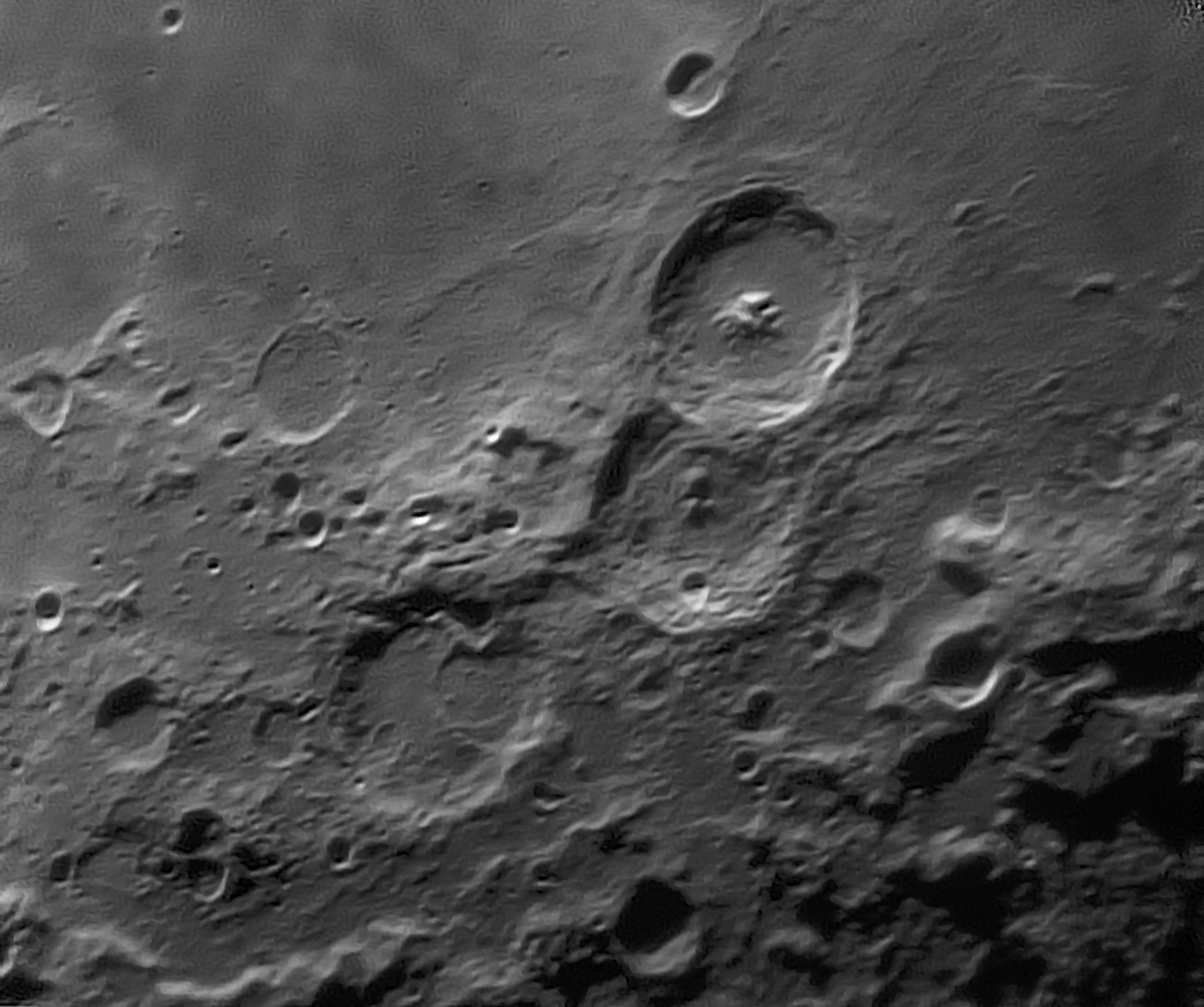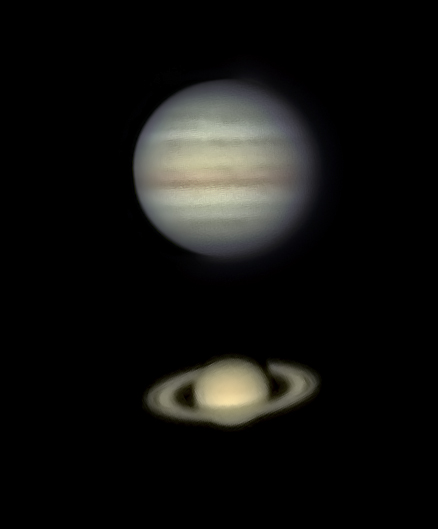Tweaking the Kit
11/10/2021. Tonight I tried Jupiter and Saturn with the ASI462MC and revisted the Moon, too. All my efforts got photobombed by a SpaceX rocket launch which in turn got photobombed by a South Taurid fireball. Read all about that over on the "Starry Nights" section.
Back to routine stuff here. Something is working very well for lunar imaging. The TeleVue Powermate 5x works great even though I don't have a solid 2-inch to 1.25-inch adapter (go figure). I kludged with one from the Big Barlow but it was not ideal for this app, so a dirt-simple reducer is on the way from Amazon.
I was using the A-P / Baader MaxBright diagonal tonight. The diagonal serves two purposes: it takes up 103mm of backfocus and it may act as an IR-cut filter. I need to measure how effectively it really filters IR. In any event, in the interests of control, solidity, and versatility, I've got a Blue Fireball extension tube and a ZWO UV/IR cut filter on the way from Agena to I can image without the diagonal, with and without the IR filtration. The absence of the diagonal will also permit more effective use of the 642nm and 850nm IR filters.
Also, for good measure, an EOS-T2 adapter is on the way from Agena to allow me to put any of the ZWO cameras behind my camera lenses. I think the 462MC will be especially useful as a long-reach color camera there.
Take it all one thing at a time. The 462MC and 5x Powermate:

best 150 of 3,000
These results seem noticeably better (sharper and with better tones) than my recent efforts with the 178MM. Why? Well, the 5x Powermate ought to be better than the stacked Barlows, and the slightly larger pixels (2.8u vs 2.4u) of the 462MC are a better fit to the available resolution (for that matter, since the 462MC is a one shot color camera, are the pixels effectively 5.6u?). Measure the achieved focal length and make sure what the numbers look like here.
Here's Jupiter and Saturn, best I could do on night one:

Best 150 of 5,000
I'm not even sure that's "promising" but it's what I got. I suspect the color is washed out by a flood of excess IR, given that the camera is extremely sensitive to near IR and that the Bayer matrix appears (from the response graph ZWO publishes) to be essentially transparent at those wavelengths. If the Maxbight diagonal really cuts IR, then this explanation is bogus, and I'll look elsewhere to fix the weak color. Also, I was unsure when to deBayer in Firecapture and made a mess of experiments in that regard, so there was nothing systematic about these results. I couldn't even tell you if those clips were captured with or without deBayering. For the record: deBayer to focus, not to capture (CloudyNights forum advice).
Next: a more solid 1.25-inch connection, eliminate the diagonal, and try imaging with and without the IR-cut filter. After that, try the deep and deeper IR filters. (I didn't really think this foray into planetary imaging would be simple.) Also, you have too many toys. I ordered that 1.25 bushing, then found two in my eyepiece drawer; ordered a self-centering twistlock 80mm extension, and found exactly the same part in a box of miscellaneous bits (found the order from 2015, also from Agena). Lordy. I did not have the right IR-cut filter or the EOS adapter, thank goodness, and now I do and they all seem to play well together. I was just too beat tonight to take it all out and see if the distances work. Soon!
Anyway, none of that is what really stole the show.
:: top ::
|